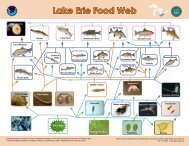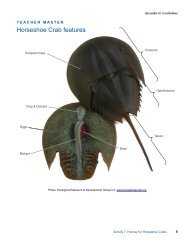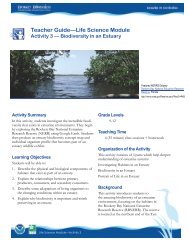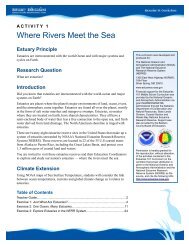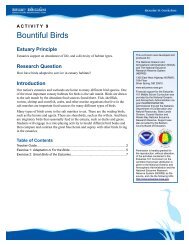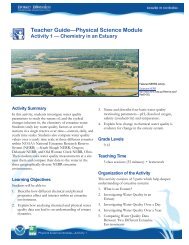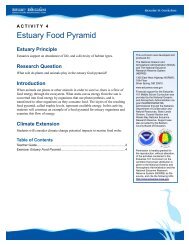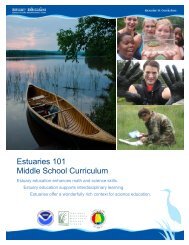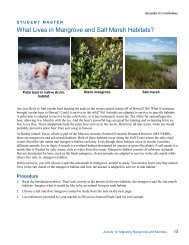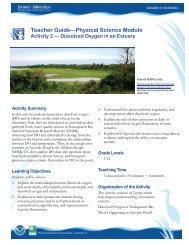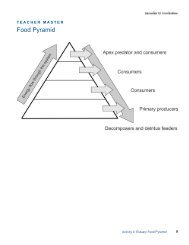Teacher GuideâEarth Science Module - Estuaries NOAA
Teacher GuideâEarth Science Module - Estuaries NOAA
Teacher GuideâEarth Science Module - Estuaries NOAA
You also want an ePaper? Increase the reach of your titles
YUMPU automatically turns print PDFs into web optimized ePapers that Google loves.
2b. Which NERRS sites had more than one major weather event impact them in 2005?Part 3 — Impact of Extreme Weather on an EstuarySevere weather has profound effects on coastal areas, tearing down trees, and washing beaches and houses away.<strong>Estuaries</strong> are particularly sensitive to severe weather since the organisms that live in them are already in a delicatelybalanced environment of a salt and fresh water transition zone.You will investigate the effect of a large storm on the North Carolina Estuarine Research Reserve. HurricaneBonnie formed off the coast of western Africa on August 14th, 1998.Although slow to develop, Bonnie grew in intensity and became a tropical storm with winds of about 40 mph aweek later. While moving more quickly, Bonnie achieved hurricane status with winds over 60 mph as the stormpasses north of Puerto Rico on August 22nd.On August 26th, Hurricane Bonnie weakens a little before she strikes the coast just east of Cape Fear near midnightwith winds around 110 mph.Bonnie was the first major hurricane (Category 3) of the 1998 season. The winds and flooding rains damagedbuildings and cut off power to nearly a half-million people. The storm was nearly 400 miles wide as it crossed thecoast.Figure 3.Hurricane Bonnie making landfall on the eastern coast of the United States.Earth <strong>Science</strong> <strong>Module</strong>—Activity 412



